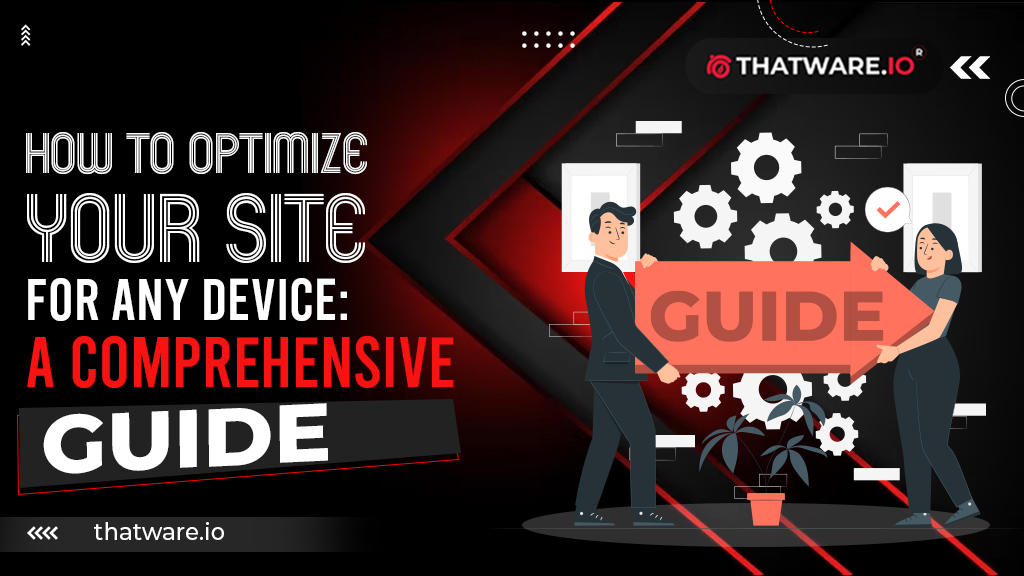In today’s digital age, having a responsive and device-agnostic website is crucial for success. With the proliferation of smartphones, tablets, laptops, and various screen sizes, your website must adapt seamlessly to different devices. This not only enhances user experience but also improves your website’s search engine rankings. In this comprehensive guide, we’ll walk you through the steps to optimize your site for any device.
Why Is Device Optimization Important?
Before diving into the how-tos, let’s understand why optimizing your website for different devices matters:
1. Enhanced User Experience:
A responsive website ensures that visitors have a consistent and enjoyable experience, regardless of the device they use. It minimizes resizing, panning, and scrolling, which can frustrate users and lead to higher bounce rates.
2. Improved SEO:
Search engines like Google prioritize mobile-friendly websites in their rankings. An optimized site can boost your SEO efforts, resulting in higher visibility and more organic traffic.
3. Wider Audience Reach:
With the vast array of devices available, optimizing your site for different screen sizes and resolutions ensures you reach a broader audience. This inclusivity can lead to increased conversions and revenue.
4. Future-Proofing:
As new devices and technologies emerge, having a device-agnostic website can future-proof your online presence. You won’t need to constantly overhaul your site to accommodate the latest gadgets.
Now that you understand the importance of device optimization, let’s delve into the steps to achieve it:
1. Implement Responsive Design:
Responsive web design is the foundation of device optimization. It involves creating a website layout that adjusts fluidly to fit various screen sizes. To achieve this:
- Use CSS (Cascading Style Sheets) media queries to set breakpoints for different screen widths.
- Ensure that images and media elements are flexible and adapt to different screen resolutions.
- Test your design on various devices and browsers to identify and resolve layout issues.
2. Use Fluid Grids and Flexible Images:
A fluid grid system ensures that your website’s content scales proportionally to the user’s screen size. To implement this:
- Use relative units like percentages rather than fixed pixels for layout elements.
- Employ flexible images that resize with the container to maintain aspect ratios.
- Test your design thoroughly to ensure content displays correctly on all devices.
3. Optimize Content for Speed:
Fast-loading websites are crucial for both user experience and SEO. To optimize your site’s performance:
- Minimize HTTP requests by reducing the number of scripts and stylesheets.
- Compress images and use next-gen image formats like WebP.
- Enable browser caching to reduce load times for returning visitors.
- Use a content delivery network (CDN) to serve your content from servers located closer to your users.
4. Ensure Touch-Friendly Navigation:
For mobile devices, touch-friendly navigation is vital. Implement:
- Larger, well-spaced buttons and links to prevent accidental clicks.
- Easy-to-use navigation menus with a clear hierarchy.
- Avoidance of pop-ups and interstitials that can obstruct the user’s view on smaller screens.
5. Test Across Multiple Devices and Browsers:
Regular testing is essential to ensure your website looks and functions correctly on various devices and browsers. Consider:
- Using online testing tools like BrowserStack or Responsinator.
- Performing manual testing on popular devices and browsers.
- Soliciting feedback from users to identify any issues you might have missed.
6. Prioritize Mobile SEO:
Mobile SEO optimization is a must for a device-agnostic site. Key factors to focus on include:
- Mobile-friendly page speed, ensuring quick load times on mobile devices.
- Mobile-first indexing, where Google predominantly uses the mobile version of your site for ranking and indexing.
- Structured data markup to provide search engines with essential information about your content.
7. Monitor and Adapt:
Optimizing your site for various devices is an ongoing process. Keep an eye on user behavior, website performance, and emerging technologies. Continuously adapt your site to meet changing user expectations and device requirements.
In conclusion, optimizing your website for any device is not just a good practice; it’s a necessity in today’s digital landscape. By following these steps, you can create a responsive and device-agnostic website that provides an excellent user experience, improves your SEO rankings, and ensures your site remains relevant in the ever-evolving world of technology.
